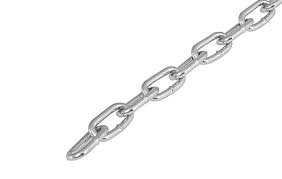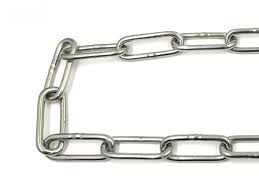Our staff will contact you within 12 hours, You can also contact us through the following ways:
Contact US WhatsApp: +8618766656705
- Email: [email protected]
- Tel: +8618766656705
- Web: https://www.toponechain.com/
Livestock management requires different types of chains depending on the animal species, usage environment, and handling purpose. While all livestock chains are designed for restraint and control, their structure, link style, and coating vary based on whether they are used for cattle, horses, goats, or sheep. Understanding the differences helps farmers improve animal safety and farm efficiency.
Type | Description | Best For |
Standard Restraint Chain | Medium-strength, smooth links for everyday control | Cattle barns, dairy farms |
Long-Link Livestock Chain | Extra spacing between links for flexibility and comfort | Horses, foals, stables |
Heavy-Duty Animal Chain | Thicker links for stronger restraint | Bulls, large cattle |
Collar/Fence Chain | Used with rings or swivel clips | Sheep/goats |
Galvanized Outdoor Chain | Rust-resistant for pasture or outdoor fencing | Open-field farms |
Stainless Steel Hygienic Chain | Anti-bacteria & easy to clean | Dairy/cold-region farms |

Use medium or heavy-duty livestock chain
Rounded, smooth links to avoid neck irritation
Prefer galvanized or stainless coating to resist manure corrosion
Use long-link chain to allow controlled head movement
Avoid sharp edges to prevent mane or skin damage
Should be easy to adjust for training and tethering
Use small-diameter chain for lightweight restraint
Often paired with hooks or collars
Focus on safety, not pulling strength
Factor | Why It Matters | Recommended |
Material | Prevents rust & infection | Galvanized or stainless steel |
Chain Link Shape | Affects comfort & movement | Rounded / smooth links |
Diameter | Matching animal size | Thicker for cattle, thinner for goats |
Location | Barn vs. pasture | Indoor: zinc / Outdoor: hot-dip galv |
Safety | Avoid stress & injury | Flexible but secure |
Many farm operators mistakenly assume a g80 lifting chain could be used for livestock, but this is not correct.
G80 lifting chain is engineered for cranes and overhead lifting
Livestock chain is engineered for animal comfort and safety
Industrial Chain | Livestock Chain |
Rigid, high tensile | Moderate strength, high comfort |
Short-link | Longer or smooth link |
Heat-treated for load | Surface treated for corrosion |
For steel / machinery | For live animals |
TOPONE CHAIN provides OEM supply for farms, distributors, and agricultural equipment brands:
Available by meter, by coil, or pre-cut length
Plastic reels for small farms / steel drums for large orders
Labeling for quick barn installation
Fast shipping with warehouse inventory support
Choosing the right livestock chain depends on the animal type, restraint environment, and farm management style. By selecting the appropriate chain thickness, link design, and coating, farmers can improve animal welfare and long-term durability.
TOPONE CHAIN supplies a full range of farm-grade chains designed for cattle, horses, sheep, and goat applications with corrosion-resistant and animal-safe construction.
